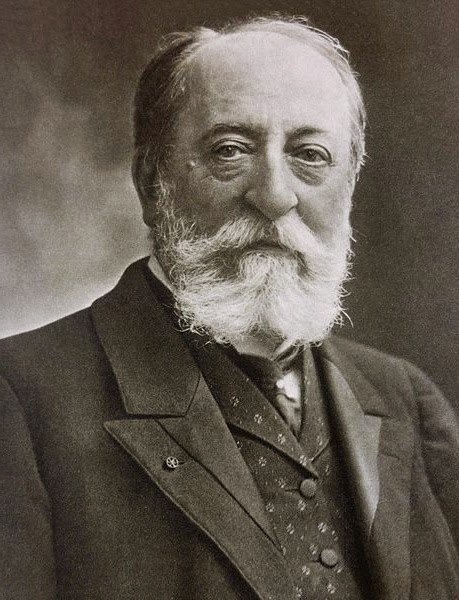Parisian virtuoso Camille Saint-Saens was forward-thinking in his compositions – his operas were famous for their dramatic flair and brilliance. Though his third Violin Concerto maintains a regular structure, it has many more operatic characters than other Romantic-era compositions such as Brahms’ Violin Sonata No. 1. While the sonata is a single character reflecting on the past, the concerto incorporates a cast of varied characters performing in the same production.
The entire first movement of the violin concerto embodies virtuosic and singing qualities. Logically, this piece was dedicated to Pablo Sarasate, a brilliant violinist and composer, who famously said of Brahms’ Violin Concerto, “I will not stand on a podium in front of an audience and wait for the oboe to play the only melody in the piece”. Saint-Saens carefully avoids any reproach of this nature by giving all of the melody lines to the violin – all three separate themes, in fact, plus grandiose 16th-note filigree throughout the movement.
Judging from his own compositions, Sarasate loved playing on the G string, so Saint-Saens obliged by writing the opening phrases to be able to be played completely on the G string if desired. This is still traditionally done by violinists, including myself.
The second main theme in the piece is dreamy and searching, wandering from key to key until landing safely in the third singing main theme, soft and caressing. The first movement alternates regularly between these themes and virtuosic breaks before finishing in a brilliant, break-neck flourish of arpeggios.
The second movement is characteristically operatic in a totally different way. Saint-Saens wrote it as the traditional slow movement of the violin concerto and takes the opportunity to make it as Romantically lush as possible. The movement brings to mind a romantic subplot in Act II of an opera, complete with male and female voices alternating song. Perhaps imagine the violin doubling two rich voices singing l’amour, l’amour in musical French or a gracefully choreographed pas de deux.
Soloist In Mo Yang performs with the Orchestre National de France

